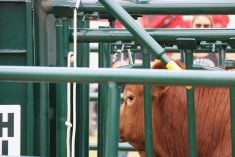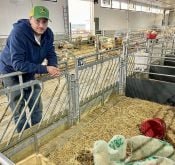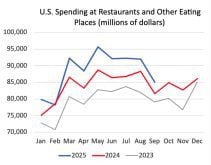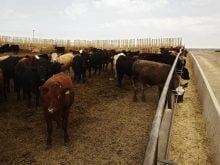The morning session at the Prairie Swine Centre’s Focus on the Future conference in Saskatoon on March 28 was billed as an upbeat outlook of a Canadian agriculture industry that includes pork production.
Shortly after the session began it became apparent the industry’s list of challenges would dwarf the few opportunities mentioned in the debate, a grim reminder of how far the pork industry’s fortunes have fallen.
Speakers talked about soaring labour costs, shrinking packing capacity, the looming threat of country of origin labelling in the United States and the potential for devastating disease outbreaks.
Read Also
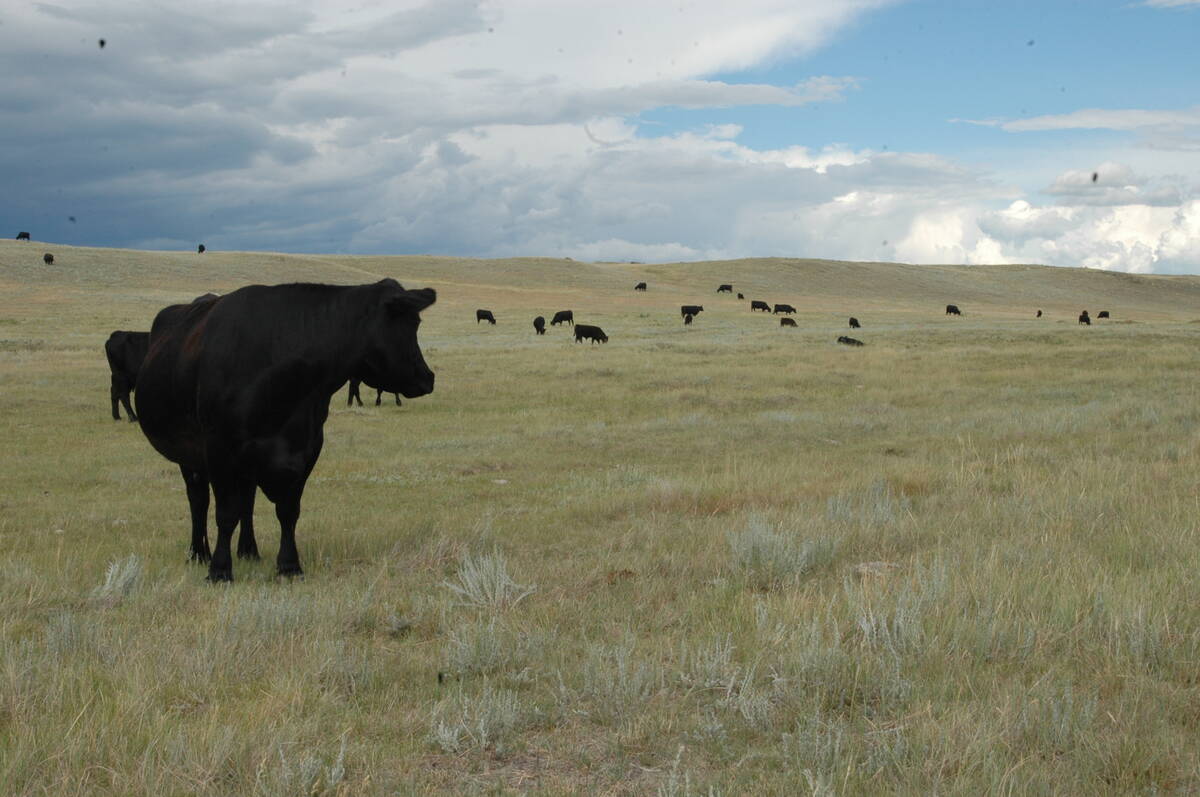
Canadian Food Inspection Agency slammed for handling of bovine tuberculosis case
The federal government leans heavily on producers to “take one for the team” and risk their livelihoods without any reassurance of support.
It was all a bit much for Ard Bonghuis, a young farmer who recently took over a 700 sow farrow-to-finish operation near Taber, Alta.
“I hear these guys talking, and doomsday is going to come pretty soon,” he said during the question and answer session.
In an interview after the failed morning pick-me-up session, he said he refused to believe the gloomy outlook.
“I’m only two years in this business and I don’t see the problems that they see.”
But according to Ben Woolley, vice-president of Sunterra Farms, one of Canada’s largest hog producers, the threats facing the industry are as real as they are scary.
“There’s no point putting false hope out there,” he said. “That’s just a waste of time and energy.”
Of particular concern to Woolley is country of origin labelling. It has been on the legislative back burner in the U.S., but with the Democrats who proposed the bill now controlling Congress, things are about to heat up.
“This is coming. There is no question about it,” he told producers attending the two-day conference.
Mandatory labelling is supposed to kick in on Sept. 30, 2008. The implementation date has been delayed twice, but Woolley thinks the stall tactics are over and that spells disaster for Canada’s hog industry.
“The first thing that will happen is the U.S. packers will probably stop killing Canadian pigs altogether,” he said.
The cost of tracking and labelling the animals will be prohibitive, which means producers will have to find a new home for the two million slaughter pigs and seven million feeders now heading south of the border.
Eventually one or two U.S. packers may accept Canadian pigs but probably at a $10-15 per animal discount.
“It’s going to devastate this industry,” Woolley said.
That body blow will be delivered at the same time the industry is trying to recover from the loss of the Maple Leaf plant in Saskatoon, two Olymel plants in Quebec and the potential closure of another Maple Leaf plant in Burlington, Ont.
“The industry is under pressure. There is no question about it,” said Woolley, adding it is imperative for provincial and federal pork organizations to do whatever they can to mitigate the risks.
A soaring labour bill is another production headache facing hog barn operators, said Rocky Morrill, president of Peace Pork, an 8,000-sow, 20,000-finisher operation in Alberta’s Peace River district.
“My barns would not be open if we could not bring in foreign workers,” he said.
Morrill estimated 65 percent of the company’s 60 employees are immigrants from 11 countries.
Woolley said 50 to 60 percent of Sunterra’s 1,000 workers are foreigners.
Government policy is also affecting the industry. Morrill said Ottawa has sacrificed an agrifood policy in favour of an agrifuel agenda.
“The government is compensating ethanol almost blindly without thinking of the ramifications on the rest of the agriculture sector,” he said.
The presentations weren’t all doom and gloom. Arlee McGrath, shareholder in Sinnett Pork Farm, a 1,200 sow farrow-to-finish operation near Leroy, Sask., said diversifying into the hog industry has revitalized his farm.
He estimated his 20,000 acre grain farm has incurred $300,000 in extra transportation costs per year since the demise of the Crow Benefit in 1996.
That loss has been more than offset by the shift into hog production through fertilizer savings and increased production associated with manure application and the freight benefits and premiums garnered by shipping grain to a local feed mill. Added up, it amounts to $330,000 in annual savings.
“That’s a real big plus.”
Morrill also touched on one positive for those who have survived the hog industry problems. Many people have given up on the sow side and it has created a temporary supply shortage.
“I get calls every week from people looking for weaner pigs.”
He said there’s no point getting out of the hog business right now because nobody is buying production units.
“You have to keep soldiering on, do the best job you possibly can, keep your costs down as tight as you can and look for your best marketing opportunities.”
Bonghuis said that’s exactly what he plans to do.
“We have to be creative and maybe find different markets.”




